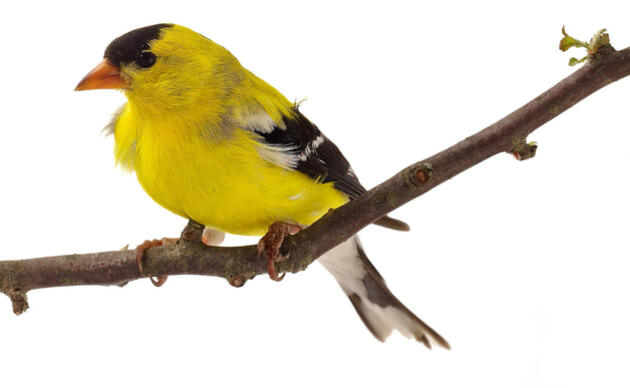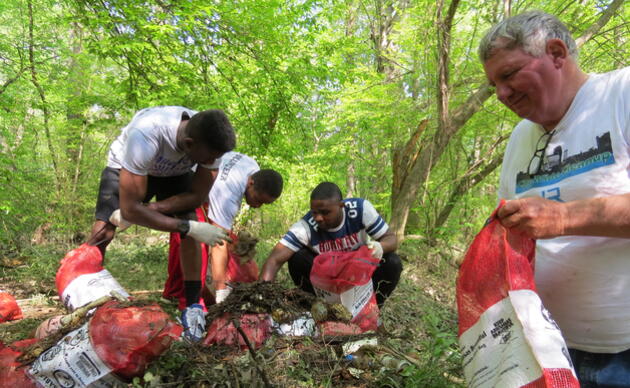Scientists Uncover Clues to Prothonotary Warbler's Mysterious Decline
Read the Audubon.org story: New Research Details Warblers Mystery Treks
Learn how you can help Prothonotary Warblers.
The Prothonotary Warbler population has declined 40 percent since the 1960s and their preferred breeding habitat – swamps and forested wetlands – has also disappeared at an alarming rate. However, this bird’s decline has outpaced that of their breeding habitat. Scientists suspect these birds are experiencing difficulties elsewhere, such as on their wintering grounds in Central America and northern South America.
Recently, a study by Audubon Louisiana and Louisiana Bird Observatory (LABO) reveal the first-ever mapped migration of a Prothonotary Warbler, a species of conservation concern. A paper published by the Journal of Field Ornithology, highlights an enhanced understanding of the year-round journey of this charming songbird.
“This research has already resulted in several exciting discoveries,” said Dr. Erik Johnson, the co-author of the study and Director of Bird Conservation for Audubon Louisiana. “Knowing where these birds go and how long they stay at each location will help us understand what conservation actions will best reverse population declines.”
For their small size – typically weighing just half an ounce – these warblers are incredible travelers and impressively resilient. Data from the single returning bird, named GeoDad, in 2014 shows he made several significant water crossings, including two non-stop 500+ mile flights across the Gulf of Mexico. In only eight months, he traveled a minimum of 5,000 miles and through at least seven countries.
“As part of this study in 2013, we deployed three geolocators on Prothonotary Warblers in Baton Rouge,” said Dr. Jared Wolfe, the study’s lead author, founder of the Louisiana Bird Observatory (LABO), and a postdoctoral researcher at Pacific Southwest Research Station. “After the 2013 breeding season, at least one individual completed its fall migration, overwintered, and finally made his way back to Louisiana in 2014 where the bird was recaptured and the geolocator was retrieved.”
Dr. Wolfe and Dr. Johnson have been working for several years with several other scientists and a host of dedicated LABO volunteers to monitor and band these birds, but tracking their migration has been a challenge. On songbirds that are too small to carry GPS units, scientists use geolocators. A geolocator records the estimated longitude and latitude of a bird, but the data cannot be wirelessly or remotely transmitted, and are stored on the device until they can be retrieved from the bird and manually downloaded.
Based on the success of this study, the Prothonotary Warbler Working Group was formed, a coalition coordinated by Dr. Johnson. The working group includes researchers from Audubon South Carolina, Virginia Commonwealth University, Arkansas State University, Ohio State University, and about 20 other organizations. In 2014 and 2015, the group has already deployed 77 geolocators on Prothonotary Warblers across five states.
By increasing the breadth of the study, the team of scientists hopes to better understand the migratory and overwintering behavior of these warblers to identify core areas of habitat use that may require additional management and protection.
Audubon Louisiana and LABO will continue building and installing nest boxes, training new citizen scientists, and building awareness to help monitor Prothonotary Warblers in Louisiana.
Get Involved
Be a voice for birds
Join our Advocacy Team to receive action alerts about legislation and policy when Audubon Delta's birds need your voice.
Join Our Flock
Signing up is the best way to keep up with Audubon's latest news, programs and initiatives.




